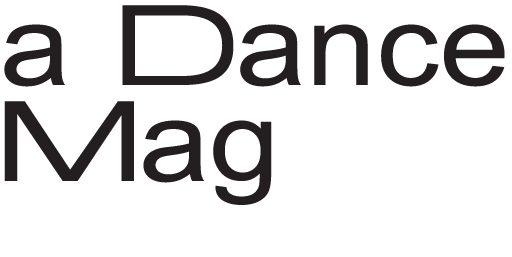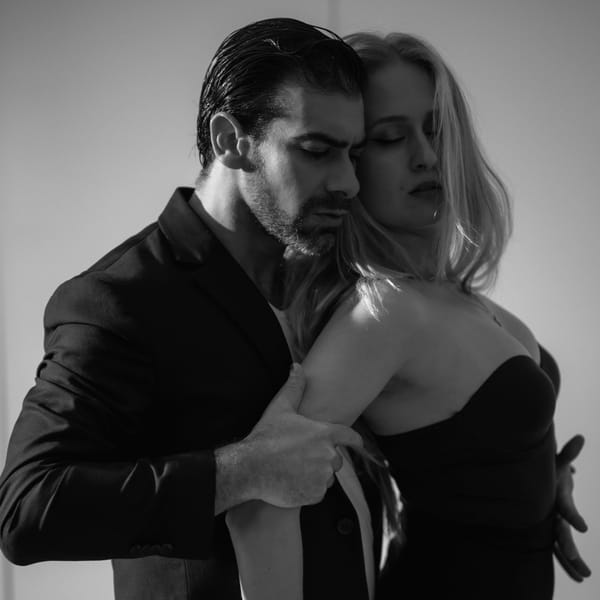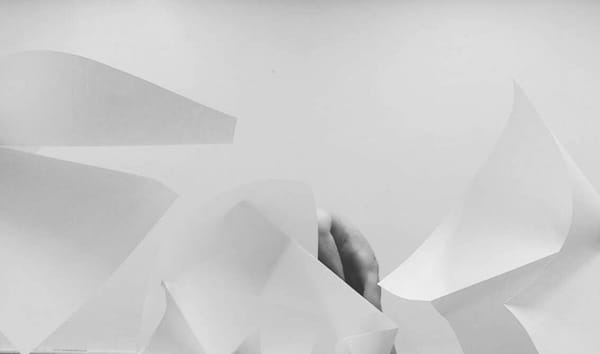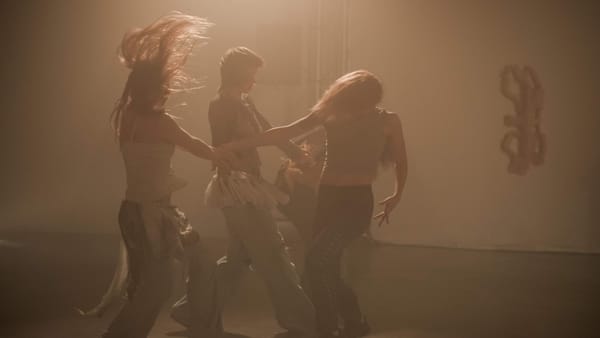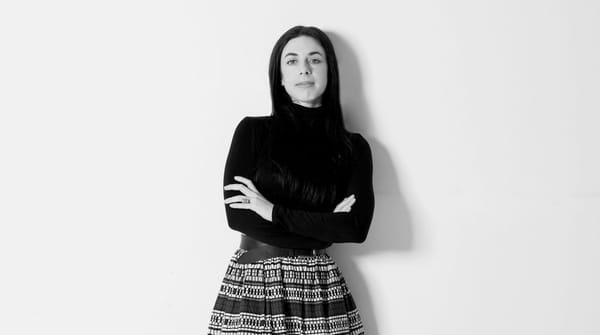Gyung Moo Kim's Journey from Seoul Streets to Berlin Stages
From Seoul's hip-hop battles to Berlin's avant-garde stages, Korean dancer Gyung Moo Kim has built a career on embracing constraint and listening to what his body demand. His latest work emerges from a "retrocausal collaboration" that stretches across continents, and art forms.
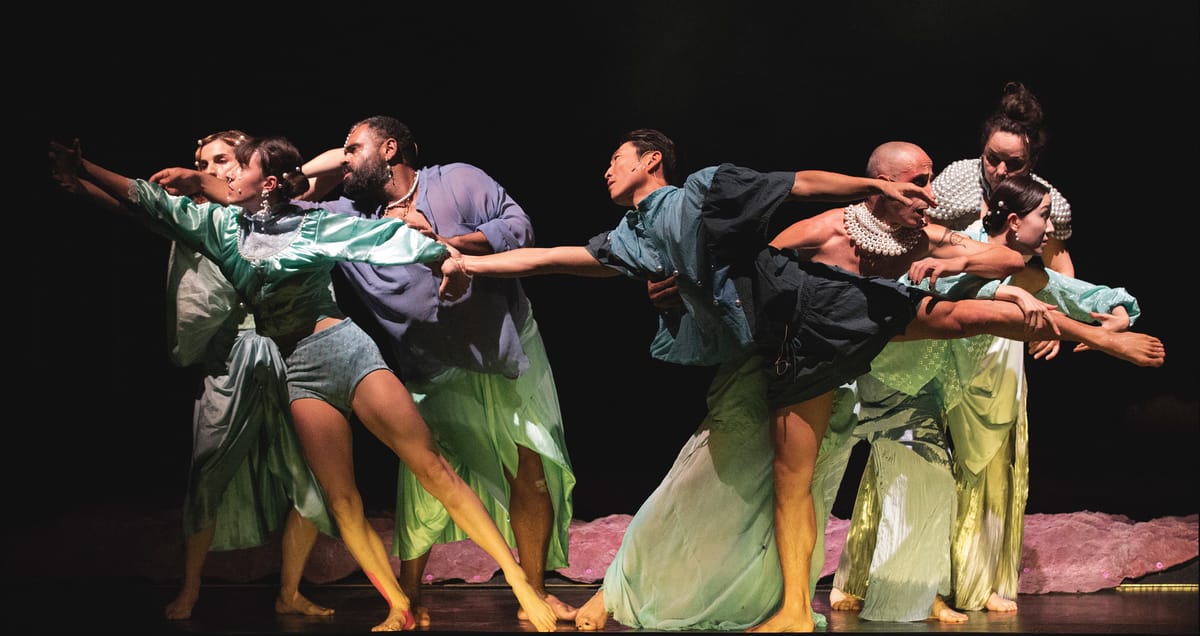
In the frost-covered hills of Lübars, wrapped in a hulking creature made of 25,000 cable ties, Gyung Moo Kim finds himself in constant negotiation with gravity. Sometimes he resists its pull, other times he gives in, allowing himself to collapse into the earth. "The most honest movement, I think, was simply falling," he reflects on this performance that would become part of Haggai Cohen-Milo's music video ‘Song of the Earth’—a collaboration that emerged through what Kim calls "retrocausal" creative partnership.
This moment captures something essential about Kim's artistic practice: a willingness to surrender to forces beyond his control, whether gravity, costume constraints, or the unexpected directions that emerge when artists from different disciplines find each other across time and space.
From Seoul to the World
Born in South Korea in 1980, Kim's dance journey began in the hip-hop battles of Seoul, where sharp isolations and gravity-defying freezes earned him local acclaim. But unlike many street dancers who remain tethered to their origins, Kim saw his foundation as a launching pad rather than a destination.
"I began street dancing relatively late, in my early twenties," Kim explains. "The real work happened in the time I spent alone confronting my body at where it was, quietly paying attention to its rhythms and needs—something I continue to do, and still consider myself a student of."
This self-directed approach to learning would define his entire career. At 25, Kim enrolled at The Ailey School in New York, but he's quick to point out that formal education could only offer so much. "With a fully grown body, what formal education could offer in that short time was not much," he says. "That kind of personal, daily practice has been central to how I learn."
The New York Laboratory
New York became Kim's artistic laboratory, where he danced with a strikingly eclectic range of companies. His breakout came through his collaboration with Sidra Bell Dance New York, and he worked with companies ranging from the experimental to the classical. Each collaboration deepened his movement vocabulary, allowing him to shift fluidly between percussive attack and lyrical release, tension and surrender.
A brief but meaningful stint with New York Theatre Ballet proved particularly formative. "The director, Diana Byer, invited me to join as a guest artist and generously sponsored my American working visa," Kim recalls with gratitude. "She also made sure with love that I point my feet and straighten my knees."
Berlin and Beyond
Since moving to Berlin, Kim has established himself as both a compelling performer and creative collaborator. His relationship with Sasha Waltz & Guests began in 2015, though he's careful to clarify his role: "I have always been a guest artist with Sasha Waltz & Guests rather than a core company member." Over the years, his involvement with the company has gradually shifted as he's become more engaged in collaborations with other artists, including Jefta van Dinther and Sergiu Matis.
His solo works reveal the philosophical dancer beneath the technical virtuoso. Pieces like Chasing Silence—which premiered at Dock 11 and later had a second version at Ackerstadtpalast—and Deconstruction;f1,4 (premiered at ADA Studio as part of the festival Nah Dran) explore what happens when introspective investigation meets rigorous physical practice.
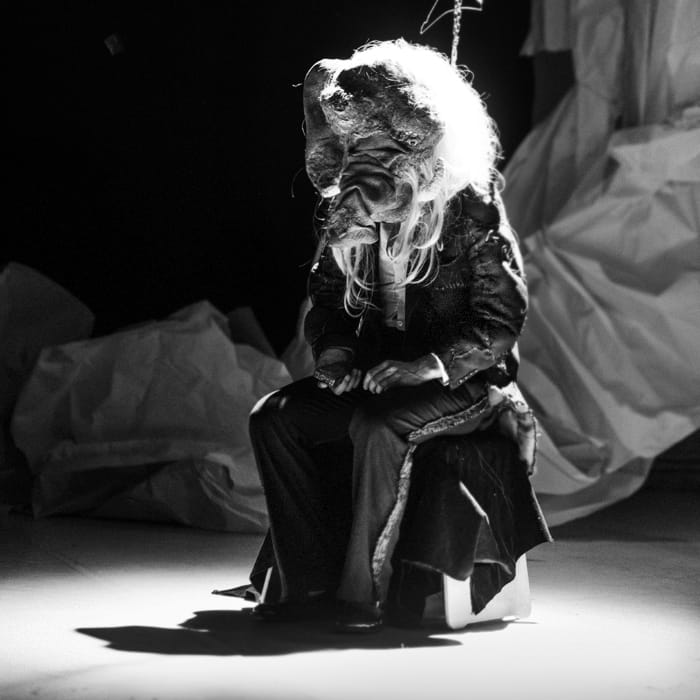
Cross-Cultural Collaboration
Kim's international work spans continents and art forms. With Neon Dance Company from the UK, led by artistic director Adrienne Hart, he's worked closely with the Japanese art foundation Reversible Destiny Foundation, founded by Arakawa and Gins. This collaboration took them to the Setouchi Art Triennale, with another project planned for autumn at Yoro Park near Tokyo.
Perhaps most significantly, his work with the company Mouvoir resulted in Hello to Emptiness, which evolved into a Korean version titled Picture a Vacuum. "This version included two Korean performers—a traditional dancer and a shaman—which I performed in and assisted the director," Kim explains. The project brought him full circle, working in his home country while drawing on all the movement languages he'd acquired in his travels.
The Art of Unexpected Collaboration
The creation of the ‘Song of the Earth’ music video exemplifies Kim's approach to collaboration. Originally conceived by costume designer Lauren Steel, DOP Jonny Brooking, and Kim himself, the project began as an exploration of Steel's extraordinary costume creations. "Lauren crafted this incredible 'monster' from 25,000 cable ties and mesh fabric, and we filmed several different scenes with varying costumes," Kim recalls.
The footage sat dormant for years until Steel, now collaborating with musician Haggai Cohen-Milo, suggested using the archival material for a music video. "Haggai's music became a kind of retroactive collaborator," Kim reflects. "It offered a frame, a pulse, a direction that allowed at least part of the archive to cohere into something whole. It was as if his music traveled back in time and quietly reorganized what had once felt scattered."
The final performance emerged from pure constraint and response. "Each scene was shot in very short bursts, because I could only wear and move in the costume for a limited time," Kim explains. "So, my process became a kind of live inquiry: trying to understand what this physicality was, what kind of body this creature had, and how to move as naturally as possible within—and as—it."
The resulting work captures something essential about Kim's artistic philosophy: the willingness to listen to what materials—whether bodies, costumes, or unexpected musical partnerships—demand and allow, rather than imposing predetermined ideas upon them.
Beyond Performance
Kim's creative practice extends beyond dancing. Photography serves as "a tool for me to practice seeing," and he's collaborated photographically with several dance and theatre artists, including Sergiu Matis, Manon Parent, Alma Palacio, and Almo Toaspern. While teaching “has never been a regular or structured part of his practice, yet," he's led classes and workshops for groups and individuals, and is currently considering possibilities at Tanzfabrik.
The Body as Bridge
In a world increasingly divided by borders and categories, Gyung Moo Kim's body tells a different story. Whether he's wrapped in 25,000 cable ties on frozen hills or moving through the refined spaces of contemporary dance, he carries with him the accumulated wisdom of every stage he's crossed—from Seoul's hip-hop battles to Berlin's experimental theaters.
His work embodies the truth that the most compelling art often emerges not from purity, but from the beautiful complexity of multiple influences dancing together in a single, irreducible human form. In Kim's practice, tradition and innovation don't oppose each other—they dance together, each making the other more vivid, more alive, more true to the endless possibilities of what a moving body can become.
